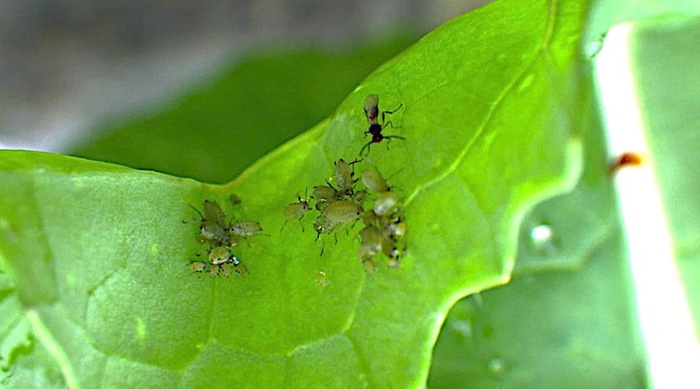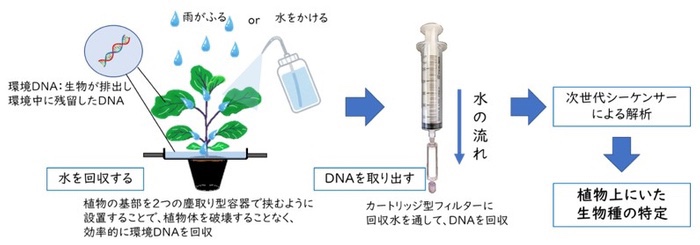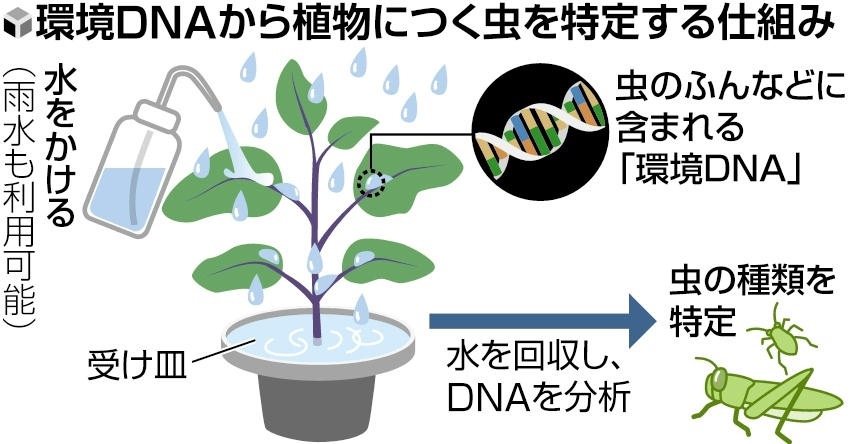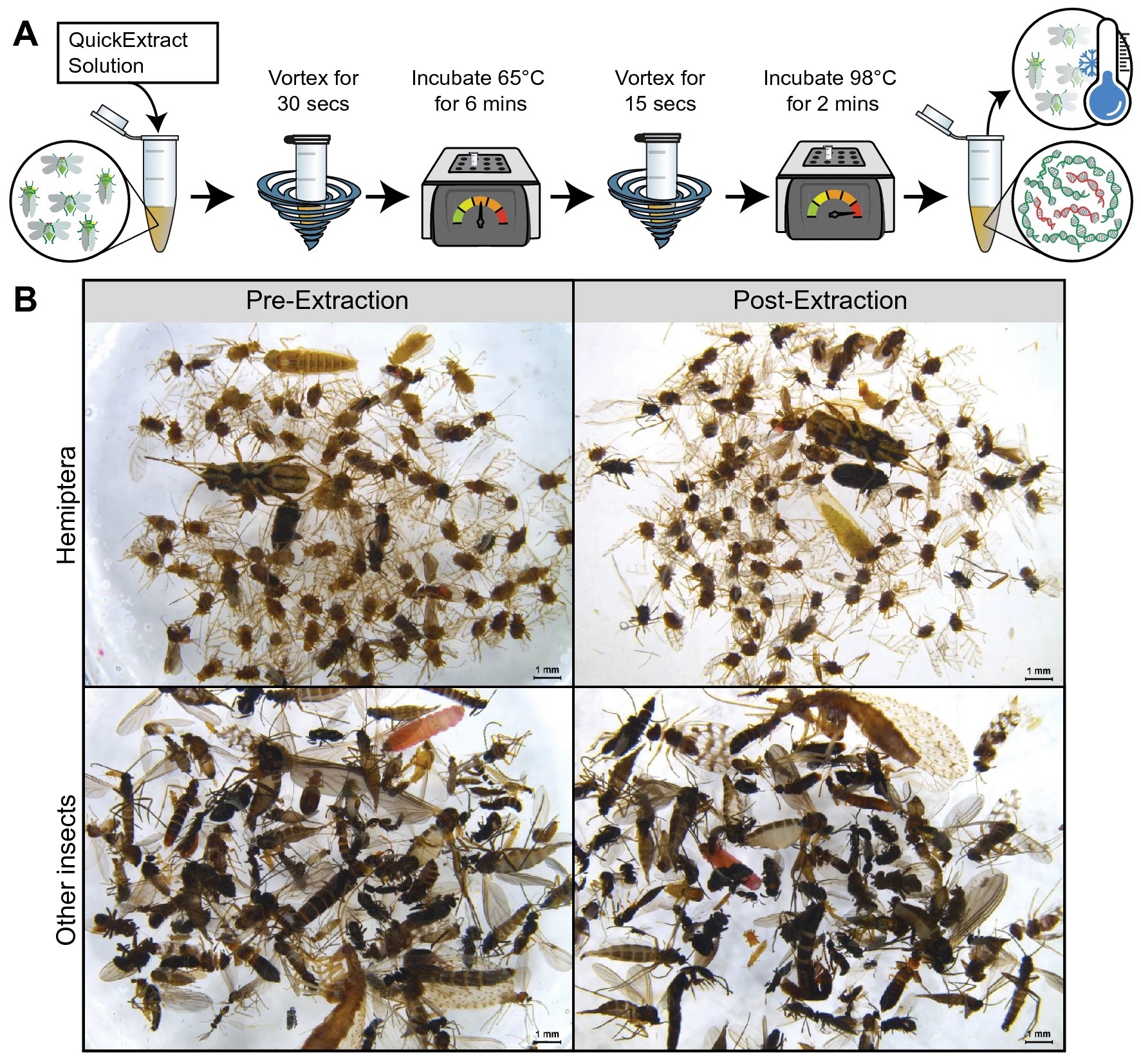
寄生在植物上的各種昆蟲的狀況
植物害蟲防治:哪些昆蟲受到侵擾?
-分析昆蟲糞便和唾液中含有的DNA-
近畿大學農學部:京都大學白備中心:龍谷大學尖端科學與工程學部
該研究小組開發了一種利用昆蟲糞便和唾液中含有的 DNA 檢測植物上多種昆蟲的方法。
水和雨水沖刷植物的表面,並在植物沿著葉子和莖落到地面時將其收集起來。
通過從中提取環境DNA,我們可以弄清植物上存在的昆蟲種類。
這項研究的結果:
未來有望應用於生物多樣性調查和病蟲害管理。
有關主題的論文:
它於 2023 年 5 月 12 日星期五在線發表在學術期刊《科學報告》上。

【研究概要】
開發了一種從植物中一次性收集留在植物上的昆蟲 DNA 的方法
從植物表面流動的水中提取環境 DNA,並使用下一代測序儀進行分析
有望用於生物多樣性調查和農產品害蟲、天敵調查
ー新聞廣播
https://newscast.jp/news/9496350

對害蟲防治的期望,幼兒園等團隊公佈
-在植物上灑水以識別葉子和莖上的昆蟲-
聚焦“環境DNA”:
我們專注於從生物體的排泄物和體液中釋放到環境(例如河流和土壤)中的 DNA。 』
該團隊共為 37 株茄子和捲心菜植物澆水,並收集流下葉子和莖幹的水。
“我們能夠在葉子上目視確認七種,包括蛾幼蟲和蚜蟲。”
回收水分析:
除此之外,還檢測到“蚱蜢、螳螂等22種不明DNA”。
在落在植物上的雨中也檢測到了它。 』
團隊指導員 Kinuyo yonetani:
還檢測到已經離開工廠的昆蟲。 當然,連樹都可以檢測到。
(讀賣新聞在線)-雅虎新聞
https://news.yahoo.co.jp/articles/46f64a24b1599a2b4c02bfeb6beef5fbb2d91ed3

Developing a non-destructive metabarcoding protocol for detection of pest insects in bulk trap catches
Scientific Reports
Abstract
Metabarcoding has the potential to revolutionise insect surveillance by providing high-throughput and cost-effective species identification of all specimens within mixed trap catches.
Nevertheless, incorporation of metabarcoding into insect diagnostic laboratories will first require the development and evaluation of protocols that adhere to the specialised regulatory requirements of invasive species surveillance.
In this study, we develop a multi-locus non-destructive metabarcoding protocol that allows sensitive detection of agricultural pests, and subsequent confirmation using traditional diagnostic techniques.
We validate this protocol for the detection of tomato potato psyllid (Bactericera cockerelli) and Russian wheat aphid (Diuraphis noxia) within mock communities and field survey traps.
We find that metabarcoding can reliably detect target insects within mixed community samples, including specimens that morphological identification did not initially detect, but sensitivity appears inversely related to community size and is impacted by primer biases, target loci, and sample indexing strategy.
https://www.nature.com/articles/s41598-021-85855-6